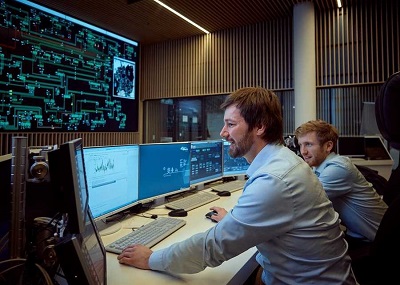06 January 2023
Using Artificial Intelligence to reduce the cost of transmission losses
An artificial neural network allows 50Hertz now to calculate the estimated grid losses for the next day.
Context
In 2018, 50Hertz, who is the responsible TSO for the North and the East of Germany, has transported a capacity of 117 Terawatt hours (TWh). During this phase, grid losses of 2.5 TWh occurred which equals two percent. What is particularly relevant in the 50Hertz grid area is the high amount of integrated renewable energy. This type of energy is often produced far away from where it is eventually needed and has to travel long distances. An artificial neural network allows 50Hertz now to calculate the estimated grid losses for the next day. This calculation results in lower costs for the additional energy that 50Hertz has to purchase on the market. 50Hertz spent 70 Million Euro on electricity purchases in 2018 to cover up the losses.
Approach
The technique used until now worked as follows: the predictions for losses were based on the prognosticated integration of wind and solar power. This was then compared to similar days in the past. For the new method, 50Hertz made use of a bigger set of data. Every 15 minutes numbers on wind- and solar power integration as well as the strength of the wind and the sun and the temperatures at 70 different places in the grid area are gathered. This forms the base on which the artificial neural network learns to predict the grid losses – also for the time span of 15 minutes for the following day. During the training phase, the artificial neural network compares its predictions with the actual results and the algorithm aligns with that. This procedure happens repeatedly. The artificial neural network literally learns new complex coherences resulting in more precise grid loss predictions.
-
Bringing AI into Production
AI can show dramatic benefits for the business, in particular if you can bring AI to production. It means that the AI model has to run automatically without human interaction every day.
We had already an existing forecasting model in production and we learned a lot from our experience. However an AI model has a lot of new requirements and challenges when it goes to the real-world. With our first AI model in production we build a prototype for AI application in production and its easier to launch the next AI applications. For short term forecasts of grid losses we plan to bring the first forecast model based on a LSTM architecture into production.
-
Data is the fuel of every AI model
In our new model, we are using more than 100 different time series to feed our neural network. It is clear the data is somehow the needed fuel to run our AI model. Moreover, with further AI-driven application the need of data will climb.
It was a big advantage that already years before we started within 50Hertz to implement a new central data platform called Energy Data Cloud. We were pioneers for data-driven application and showed the benefit of professional data management for real business applications.
-
Explainability of the AI modelAI models are data-driven and learn complex pattern to provide fantastic forecasts, but they do not explain how they work and what the reasons for a specific forecast are. However, for real-world application it is essential to understand the models and to build trust to the automated AI-driven process.
Results
On 9th December 2019 it is fully applied in the system operation at 50Hertz.



